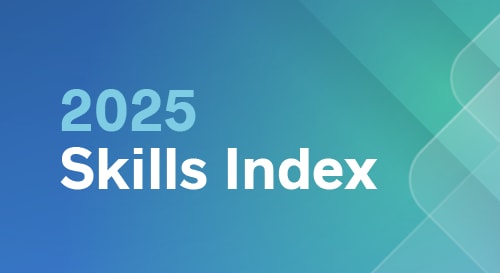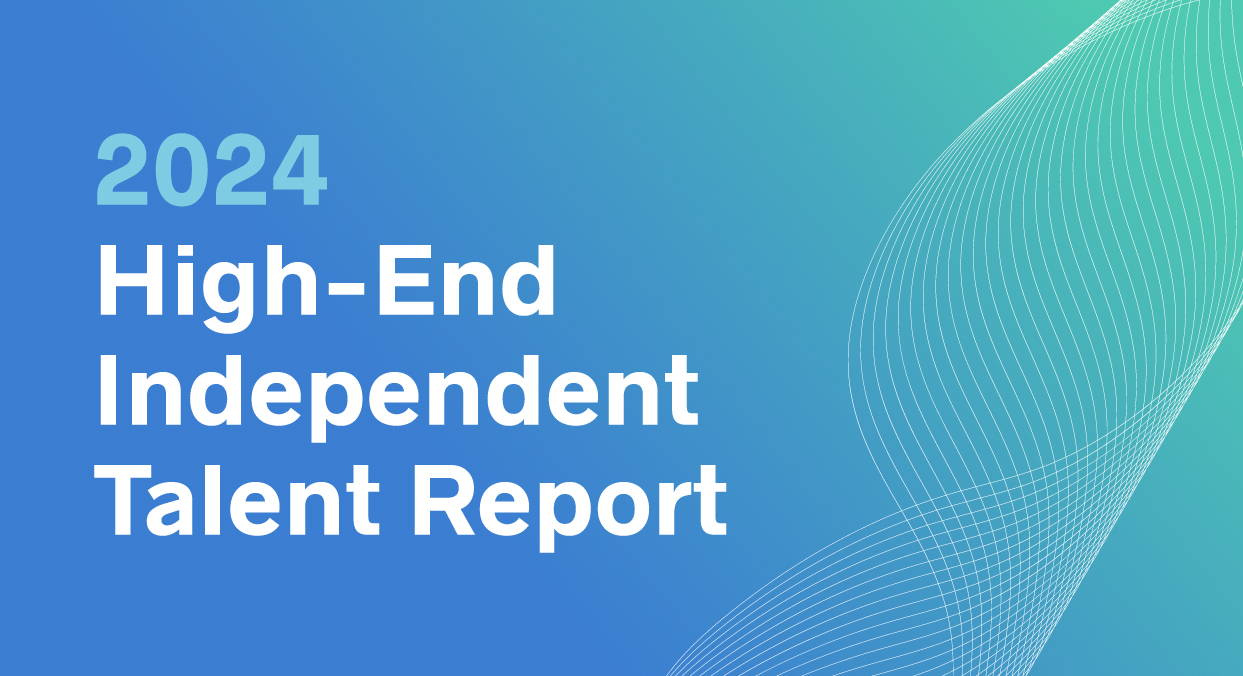Used to be, the need for interim leadership was straightforward—and relatively rare. It arose with the unexpected departure of a permanent exec, usually in the C-suite.
The work of an interim executive was also straightforward: step in seamlessly and do exactly what the permanent exec had done, but for a limited period of time. Reporting relationships remained intact. Many interim execs were retirees of the company or members of the board. The primary goal was to stabilize the ship and mark time until a new permanent exec could be in seat, not to push through new initiatives.
Now, thanks to developments in the talent marketplace and the ever-accelerating pace of change within major corporations, the concept of interim leadership is expanding. The use of interim executives is becoming a tool that augments companies’ human resource assets while enhancing “talent liquidity” at the leadership level and facilitating change and innovation. From a Head of Corporate Affairs who plays an enhanced role during a defined period of transition to Integration Leaders whose roles literally disappear over time, interim leaders are being deployed on demand, in more strategic ways than ever before, across an increasingly diverse array of categories. They help companies pilot new initiatives and address skills gaps in hard-to-hire areas. They serve as discreet advisors to permanent execs who are moving into unfamiliar territory.
Here’s why—and how your company can take advantage of the trend.
Mind the leadership gap
Even in the C-suite, employee tenure has fallen. The average tenure of permanent CEOs is only about seven years among the S&P 500, while the average tenure of CFOs is just over five years. CMOs last a mere 43 months. At the same time, it can take a while to find the right permanent executive—anywhere from two to five months, according to the Association of Executive Search and Leadership Consultants (AESC). Increasingly, there’s also a delay between the completion of a successful search and the commencement of a new job, making the effective time-to-hire even longer.
Against that backdrop, more changes are happening, with more regularity, for almost all companies and in almost every industry. Publications from the Harvard Business Review to Forbes have proclaimed that “change is the new normal.” New technologies create new ways of engaging with customers. New analytics tools expose old inefficiencies and create new product opportunities. The increased adoption of Agile methods has made team structures even more fluid and dynamic.
These changes are exciting, but they often prompt a combination of departures and new leadership roles as companies transition to the next future-state. Some of these gaps—like the white-hot and hard-to-fill Chief Information Security Officer (CISO) role—require new permanent hires. Others are, by their very nature, transitional and temporary, for instance:
- Build versus run: The executive who drives the strategic implementation of a new CRM or establishes a data science hub isn’t necessarily the right person to manage things going forward.
- Market timing: It’s inefficient—if not outright impossible—to find permanent leadership for a business unit that’s about to be sold.
- Finite initiatives: The skills you need to integrate a new acquisition or complete a transformation may no longer be needed once the work is done.
- Sequencing: At a lower but no less critical level, it can be difficult to recruit VPs when a business function is in transition and C-suite leadership is in flux.
Over time, addressing these challenges becomes less about filling a specific temporary opening than about finding ways to resource near-continuous business transformations. How do you keep moving forward when you don’t have time to find the perfect permanent hire, or when a permanent hire isn’t right for your business moment, or seemingly can’t be found anywhere?
Fortunately, a new on demand talent pool has grown up to help companies serve these needs: executives who become independent by choice and pursue their careers by developing a portfolio of interim or project roles. Couple that with companies like Business Talent Group—which helps clients find and evaluate talent, scope assignments, and support the engagement—and you have fast, flexible “interim” style resourcing at levels that range from the C-suite to VP and Director levels.
The next generation of interim leadership
Like independent consultants, most of the new cohort of freelance executives consciously choose this career path for a significant phase of their career. At BTG, we find that the majority make this choice mid-career (not at retirement) and in pursuit of hands-on, fulfilling work (rather than while searching for a permanent role).
According to the Worldwide Interim Leadership group, or WIL, 57% have been working as an interim executive for more than three years, and 19% for more than ten years. They have expertise in every sector, from energy and retail to manufacturing and logistics. One quarter of the interim executives that WIL surveyed operate at CEO and Board level, while 23% are involved with business transformation. An additional 14.5% operate at CFO level. They are well-qualified—and sometimes over-qualified—for the roles that they perform.
What can these interim executives do for you? Here are some examples from our recent engagements:
- Traditional interim roles, with a scope and capabilities update: The need for old-style interim executives has not gone away. What has changed is their availability at lower levels of the corporate org chart—and the way companies conceptualize these short-term talent gaps. We’re noticing that, more often than not, the motivation to cover a leadership gap has changed from simply “stabilizing the ship” to using the interim to accomplish a specific objective in the short term, from executing a turnaround to implementing new business processes. In the past six months, we helped a global private equity firm source an interim CEO for a retail business whose permanent CEO was on medical leave. We also provided a major HMO with an interim VP of Continuous Care while they searched for a permanent hire and supplied a global pharmaceutical company with an interim Director of Pharmacovigilance.
- Special assignments: Interim executives offer real leadership on important but temporary projects. When the head of innovation at a major American bank was implementing a new CRM—and realized that his team lacked the technical experience to lead this important initiative—he engaged an interim executive with over 20 years of experience implementing CRM programs. This temporary leader not only oversaw day-to-day development efforts but also managed the development of top-level plans and strategies for 10 months; he then left the system up and running with a team well equipped to operate it going forward.
- Advisory engagements: Interim leaders can also work as advisors to internal execs, offering behind-the-scenes support while maximizing knowledge transfer. When the EVP of a leading industrial company made a carve-out acquisition from a competitor, he engaged an experienced M&A expert to advise the acquisition and integration team. Seasoned and highly intuitive, this executive was able to read both corporate cultures and help the team anticipate, assess, prioritize, and resolve issues.
- Start-up roles designed to test new functions and businesses: More and more companies recognize the need to test/iterate/refine new roles in the field, not just on paper, before making a permanent hire. What will the pacing of the rollout of a new product really be like? How will this new function’s resourcing work, and what is the ultimate governance structure going to be for that new division? Answering these and other questions requires moving forward with work and remaining open to real learning and a variety of outcomes. We recently helped a major insurer launch a new data-rich business unit using an interim CIO, to learn and “advance the ball down the field” before committing to a retained search and a permanent job spec that was better informed and focused for success.
- An agile workforce for hard-to-hire skills: For advanced users, interim executives have evolved into a new form of fixed/variable staffing for highly critical functions. The former head of Pfizer’s in-house strategy team used independent consultants and interim executives to supplement his team in areas where in-house expertise was lacking. The HR team at another life science company is using them to build more robust capabilities in the hard-to-hire realms of data science and artificial intelligence, supplementing internal resources with on-demand experts.
Being temporarily without the support of a critical executive—or a deep leadership bench in a scarce talent segment—doesn’t mean you have to suffer through the absence or make a hasty permanent hire. With a deeper understanding of today’s interim executive market, you can move forward without skipping a beat and gain an edge over competitors who are still stuck in a 20th century talent mindset.
About the Author
More Content by Sandra Pinnavaia



![Types of Consulting Services: Forked Roads and Parallel Paths [Part 3 of 3]](https://content.cdntwrk.com/mediaproxy?url=https%3A%2F%2Fbusinesstalentgroup.com%2Fwp-content%2Fuploads%2F2019%2F10%2Fconsulting-services-1024x563.jpg&size=1&version=1712932218&sig=c6cd3e423151e1496111bb21ce454e4c&default=)

















